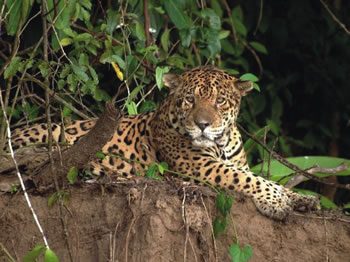How Green Is Francis?
With Pope Francis’ encyclical on the environment, Laudato Si, a sea-change is sweeping in. It invites, even demands, that we all reflect on our preaching, spirituality and lifestyle. What it asks of us is that unless we accept Francis’ challenge we will be part of the culture of indifference or resignation that is gradually leading to the degradation and eventual demise of our planet. My own reflection is that unless we as Marists respond visibly and substantially we will become increasingly seen as an Order that has little relevance or sense of hope in this age.
Why Laudato Si' is so Important
The encyclical does not put forward a lot of new insights or material. Much had already been foreshadowed in the writings and addresses of popes John Paul II and Benedict XVI – particularly in the annual World Messages of Peace on January 1. What is of most significance is the level of teaching, the detail and the prophetic tone of this document.
From the outset Francis addresses our earth as ‘home’ and ‘sister’ (#1). In this he indicates a whole new frame of reference. He then goes on to call for ‘ecological conversion’ (#5, 216-21), which will demand looking at creation with new eyes (#12, 64-75,89-92). Enshrined in this is to see nature not as problem but as mystery, inviting communion not domination; sin, in contrast, is an assertion that humankind need face no limitations in its use of the earth.
This encyclical is authoritative, even evangelical, in tone. While it praises the benefits that technology can provide it is scathing in condemnation of its excesses (#101-14). It endorses the reality of climate change (#23) and serious global loss of species (#32-42). Making the link to social justice as this pope so often does he laments that it is the poor who bear the brunt of such changes and accordingly insists on major changes in the consumerist life-styles of wealthy nations (#203-08). Some of his strongest disapproval is reserved for the economic mismanagement and greed manifest in the bank collapses of 2007-08, the overproduction of unneeded items and attempts to base economic theory and practice solely on the basis of cost/benefit analysis (#189-98). Coming to the end of the document he is not slow to expound the virtues and attitudes such as simplicity of life and boycott of some products that he sees as ways to turn around attitudes to the earth (#203-08).
A Fascinating Parallel
Accusations frequently levelled at this document are first that it is based on speculative and uncertain science and, secondly, that the proper role of the Church is to focus on issues of faith but has no competency in the worlds of economics, science and politics. By one of those marvellous synchronicities that mark Christian life, at the time of the promulgation of Laudato Si I was halfway through reading a book on these very issues. Entitled The Sixth Extinction by Elizabeth Kolbert (Bloomsbury, 2015), it has won high praise for its lucidity and objectivity. Kolbert is a reporter noted for meticulous research and recently a reporter on the New Yorker. Her writing is careful, balanced, at times lyrical and profound. Her theme is that during its existence our planet has endured five major extinction events with a number of smaller collapses between these. Now we are facing a sixth major period of species loss; the great difference is that this is not due to periods of glaciation, dramatic changes in the chemical composition of the atmosphere or the impact of a massive asteroid. The great difference today is that this calamity is anthropogenic, that is, caused by human beings like you and me.
Kolbert’s style is not preachy or ideological. Instead she visits spots on the planet where intensive scientific study on trees, water acidity, or species disappearance are happening. She talks with the researchers, explains the history of major environmental theories and allows the findings to speak for her. Her writings cover nearly all the same points that Pope Francis also reflects upon.
Three Case Studies
Here is a sampling of some of Kolbert’s travels and research. One Tree Island is tiny (just a few square kilometres), built up from broken coral at the southern end of the Great Barrier Reef. Groups of scientists have been coming here from all over the world for nearly two decades now for several weeks or months for a variety of experiments. One of the main studies has been on the effect of oceanic acidification on reef building. Reefs are one of the most engaging locales for marine biologists, being partly animal, partly vegetable and partly mineral. They have been built up by millions of polyps, as many as a hundred different species. From these tiny creatures emerge huge structures; the Great Barrier Reef stretches 2,600 kms, sometimes to a thickness of 150 metres; it is home to thousands, even millions, of creatures. As the pH level (acidity) of the oceans has steadily increased as the result of the absorption of huge quantities of carbon dioxide, there has been a steady drop in the concentration of calcium and carbonate ions needed for reef building. As this happens multiple predators come to eat, bleach and kill off the structures with the result that reefs all over the world are dying (pp. 125-37).
In her exploration of climate change Kolbert next found herself in Peru on a mountain ridge at 3600 metres. With her guide, Miles Silman, over several days she dropped down through seventeen plots at different altitudes in the Manu National Park. Each has a different annual temperature range and consequently different types of trees. Silman and his students have been recording the growth patterns of thousands of marked trees. As temperatures rise, the seedlings from trees tend to move up the slope to return to their maximal growth temperature. After a mere five years of temperature tracking they discovered that the average movement of trees was 2.5 metres further up the slope though some species jumped a remarkable thirty metres in a year. The significance of such figures is that given a possible temperature lift of five degrees in this region by 2050, many of the trees would be unable to move fast enough to reach a survivable altitude. Various critiques and modifications of this study have been proposed but even the most conservative agree that about 10% of all forest species would die (pp. 148-67)
Kolbert has several chapters on the disappearance of entire species. One of the more fascinating treats of the disappearance of the great auk. These large penguin like birds were once found in their millions from Norway to Newfoundland, and from Italy to Florida. Superb swimmers, they could not fly and were easy targets for the European sailors who set out each year for the Newfoundland cod fisheries. On Funk Island, one of their last great stands, they stood shoulder to shoulder during breeding season covering the twenty hectares of the island, 65 km off Newfoundland’s northeast coast. Sailors would fill barrels with their flesh, or use them for fish bait and feather mattresses. The last breeding pair were slaughtered in 1844 (pp. 57-66).
Conclusion
From these and visits to other research sites Kolbert puts forward several general conclusions. The first is that we may have entered into a new era of planetary history. Classical dating currently places us in the Holocene epoch which began at the end of the last ice age 11,700 years ago. Increasingly geologists are adopting a new nomenclature, that we have entered the Anthropocene epoch, a time when human action is the most prominent agent of global change (pp. 105-10). Her other reflection concerns what Pope Francis refers to as ‘rapidation’ (LS18). This is the observation that changes such as rising temperatures and acidification of the seas are taking place faster than species can adjust. This trend is magnified by the range and penetration of current technology. Humans cover vast distances in long-haul jets and huge tankers; with them often unawares they carry spores, seeds, fungi and insects, some deadly to species that have never had to resist them before. How well Kolbert illustrates this in her account of the extinction of the Panamanian golden frog which lived in their millions in central America (pp. 5-17). By one estimate every 24 hours 10,000 different species are being moved around the globe in ballast water. There are now nations where native plants have been surpassed by exotic species.
Surprisingly though it is in her reflections on human uniqueness that Kolbert comes closest to the pope. The evidence of history is that we are killers. (Genesis already recognised this in the story of Abel and Cain). Though it is impossible to find irrefutable evidence it is a strong assumption that the Neanderthals who lived in Europe for 100,000 years were eliminated through the arrival of homo sapiens (us). First we bred with them (1-4% of their genes are found in every human today), then we buried them. The same fate seems to have befallen our other close cousins the Denisovans, discovered in Southern Siberia in 2005, and the ‘hobbits’ discovered on Flores island in Indonesia at about the same time. All the great apes: chimpanzees, gorillas, orangutans, are facing extinction in the wild today because of poaching, disease or habitat loss. This is no modern aberration for it seemed that we wiped out the American mastodon and our own moa in just the same way (pp.251-58, 225-26). With the ability to represent the world in signs and symbols came the capacity to transform it – ultimately to destroy it unless we change our ways.
Comparative studies of chimps and bonobos with two and a half year old children show that both groups have very similar results in tests that involve understanding of the physical world, of quantity and causality. Where the human infants pulled ahead was in picking up on social cues; apes have never arrived at collective problem solving – apes do not do collaborative projects, we do. The British palaeontologist Michael Benton summed this up succinctly in saying “Communication holds societies together and allows humans to escape evolution” (p.266). The question that Pope Francis is putting before us is whether open and truthful acknowledgement of the consequences of our unique evolutionary path will lead us to a plan to restore the earth or to lead innumerable species – and finally our own – into extinction.



 Entries(RSS)
Entries(RSS)